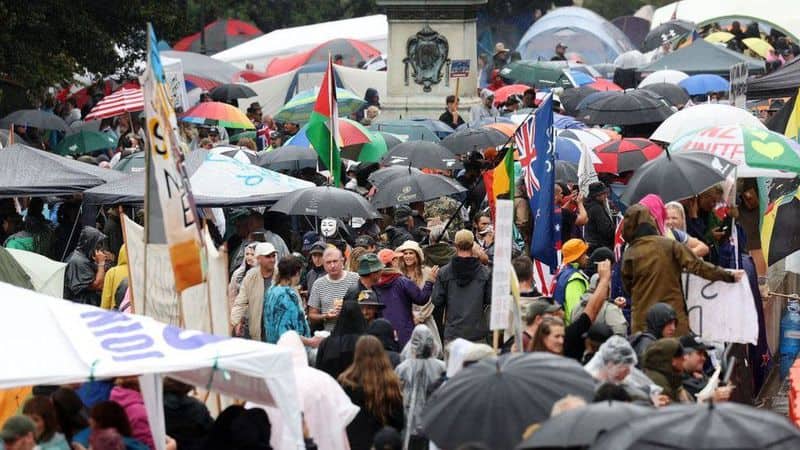By Matthew Cunningham on The SpinOff…
No, the people who occupied parliament grounds weren’t all white supremacists or neo-Nazis, but that doesn’t mean they weren’t influenced by the radical right. Historian Matthew Cunningham explains.
A few days before police cleared the “anti-mandate” protesters from parliament grounds, a video of children dancing and waving colourful ribbons at the protest camp did the rounds on social media. “These must be the terrorists & neo nazi’s newshub, NZ Herald and the other fake news outlets speak of,” wrote one influencer shortly after the protest came to a violent and fiery end. “Gosh all that violence, can’t have that hey,” replied one commenter. “The training of child soldiers, no wonder they felt so threatened,” replied another.
Having spent countless hours wading through the mire of Covid-19 mis- and dis-information on social media over the past few months, I have seen this sort of argument play out many times. When faced with even the faintest whiff of the “f” word (no, not that one), someone will inevitably counter with a reference to how “normal” the protesters really are. Doctors, teachers, children, grandmothers – everyday people, pulled from their apathy by the supposedly tyrannical actions of their government.
And what about all the Māori protesters, the tino rangatiratanga and He Whakaputanga flags? How could they possibly be fascists, or neo-Nazis, or white supremacists? As another influencer put it after the Freedoms and Rights Coalition protest march on November 12, 2021, “[t]he news said that these were white supremacists yet every organiser that I met had Māori or Pasifika heritage”…
Read the article in full on The SpinOff here.






